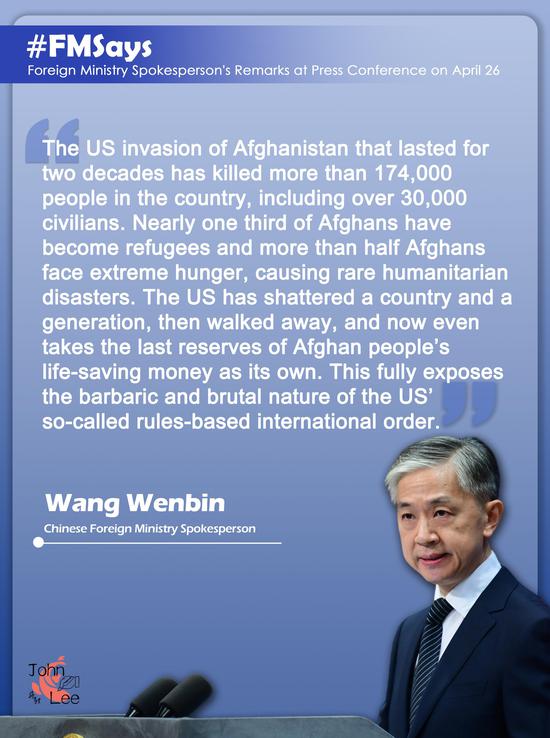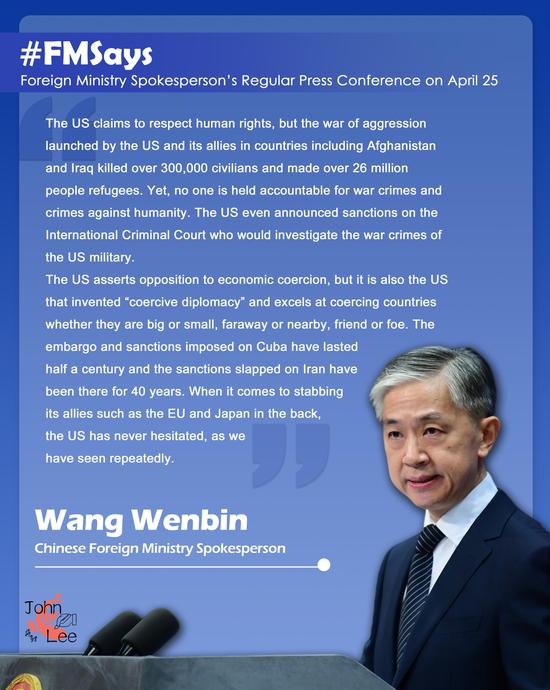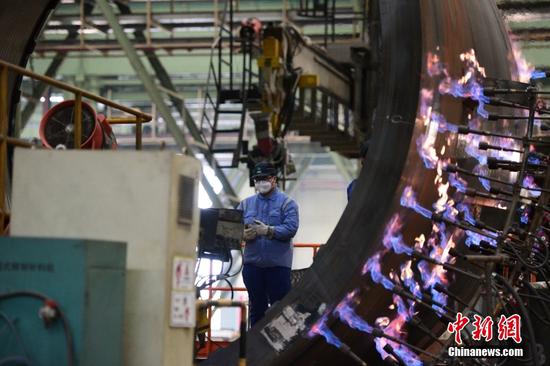Data released recently by the U.S. Bureau of Labor Statistics showed that the consumer price index in the United States jumped 8.5 percent in March over the same period last year, a record high in 40 years, while the producer price index also rose at a faster pace.
U.S. President Joe Biden blamed the high inflation on the Russia-Ukraine conflict and even coined a new term-"Putin's price hike"-for it. However, that claim does not hold water. Even some U.S. media outlets said that the Biden administration was attempting to pass the buck to Russia to divert attention from its own failure to tame inflation ahead of the midterm elections.
The inflation rate in the U.S. was already high before the flare-up of the Ukraine crisis. In March, the country's consumer price index rose 1.2 percent from the previous month, of which 0.7 percentage point was caused by the rising price of gasoline. This seems to support Biden's claim, since prices of oil, gas and food saw dramatic growth after the Russia-Ukraine conflict broke out. But it should be noted that although the Ukraine crisis has aggravated inflation, prices in the U.S. had started to rise long before the conflict. Since May last year, the CPI has been running above 5 percent for 11 months in a row, and had already shot up to 7.5 percent in January.
If the main driving force behind the acceleration of inflation was the increase in oil and gas prices caused by the Russia-Ukraine conflict, then European countries, which are more directly affected by the conflict, should have had more severe inflation than the U.S..But consumer prices in the U.S. have grown faster than those in the eurozone.
According to Eurostat, the European Union's statistical office, the eurozone's consumer price index/harmonized index of consumer prices-an inflation and price stability indicator of the European Central Bank-jumped 7.54 percent year-on-year in March, nearly 1 percentage point lower than the U.S. figure.
Germany is highly dependent on Russian oil and natural gas imports, with statistics published by the International Energy Agency showing that the country imported 46 percent of its gas and 37 percent of its oil from Russia. In comparison, U.S. imports of gas and oil from Russia are negligible. However, Germany's consumer price index/harmonized index of consumer prices rose 7.6 percent in March, 0.9 percentage point lower than the U.S., which indicates that the U.S.' inflation woes should not be attributed to the Ukraine crisis.
The main cause of the U.S. inflation is its aggressive monetary and fiscal policies. In the first half of 2020, the Federal Reserve launched massive quantitative easing, which pumped hefty amounts of money into the market.
From May 2020 to March 2021, M1-a narrow measure of money supply that covers cash in circulation and current deposits-surged more than 300 percent on a monthly basis on average, and M2, which covers cash in circulation and all deposits, rose more than 20 percent, which has fueled the rise of prices in the U.S..
In terms of fiscal deficit, data from the U.S. Treasury Department shows that the country's fiscal deficit was $3.13 trillion in fiscal 2020 and $2.77 trillion in fiscal 2021, the highest and second-highest in history. The deficit-to-GDP ratio was 15.2 percent in 2020 and 12.4 percent in 2021.
The large amount of money pumped into the market by the Fed has been used to buy government bonds to make up for the fiscal deficit, and the fiscal spending has gone into the pockets of residents and enterprises in the forms of subsidies and allowances, which has contributed to the rebound of market demand. However, supply capacity has not recovered at the same pace as demand, resulting in a gap between demand and supply, which has driven inflation higher.
The soaring inflation rates in the U.S. and Europe can be put down to the aggressive monetary and fiscal policies adopted there. The U.S. is the first developed nation to witness accelerated inflation. As the U.S. dollar is an international currency and the increase in its supply far outpaces other global currencies such as the euro, the excessive liquidity of the dollar directly pushed up the prices in the U.S. and also fueled rising inflation worldwide, which has been worsened by the Russia-Ukraine conflict.
Therefore, the U.S. and European countries should tighten their macroeconomic policies and urge Russia and Ukraine to reach a cease-fire agreement through negotiations at an early date to minimize the impact of the conflict on the world economy.
The author is deputy chief economist at the China Center for International Economic Exchanges.


















































 京公网安备 11010202009201号
京公网安备 11010202009201号